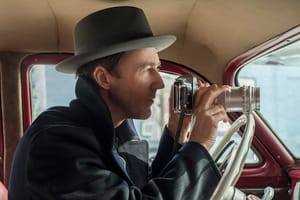
Production
Edward Norton: When you’re in production as an actor, you want to be out of your head and in your senses, working in an unconscious space. When you’re in production as a director, you want to be in an analytical headspace.
So if you happen to be doing both, that schizophrenia is like taking a record and flipping it over every few minutes to change the needle.
The funny thing is, if I was directing a movie that I wasn’t acting in, I think I could do a good job of creating the bubble of illusion and focus that actors need. But the horror of making Motherless Brooklyn was that since I was both directing and starring in it, I became my own source of distraction. And I knew before going into the shoot that directing myself would create distractions that were less than desirable, so I very purposefully didn’t work with anybody who would be needy or demand an overly precious environment. I couldn’t have actors who weren’t nimble: They needed to be stagecraft pros who could deal with a constantly fractured experience as I worked on a scene, popping out to survey other aspects of production and then coming back to talk with them about it analytically, switching right back into gear.
Also read: How Burning Cane‘s Phillip Youmans Became an Award-Winning Director at 19
Wearing multiple hats during production does have its upsides. If you’re giving a performance that has an inherent strangeness, as I do in Motherless Brooklyn, it’s good to know that you’ll have the chance later to shape it yourself editorially. You feel more free to be experimental because you don’t have to have any part of your brain thinking, “Oh God, I hope the director doesn’t use that take!”
At the start of the shoot, every director says to the crew, “We’re making a great movie!,” and the crew thinks, “Yeah, we’ve done this dance before. Yours might be good, it might not be. But we’re here.” And if you walk on set as a director with your head in their hands, then the kind of thinking that metastasizes to everybody else is, “Let’s get a coffee while he figures out what he’s doing.”
Making Motherless Brooklyn, I took a page from Wes Anderson and Spike Lee’s playbooks: I came in by saying, “On day one, that graph you have on your phone—we will be doing it. No questions, no talk, no nothing. That’s what we’re doing first.” People then think, “OK, since this is what we’re doing, now it’s on me. I’m not figuring things out; it’s already figured out.” When your team sees that you’re going stick to that plan, a whole set of expectations cascades through everybody. They start saying, “I don’t want to be the cog in the machine that breaks down. This is a thing that’s moving on plan, so we need to be on plan, too.” That’s when things really start to roll.

Share:

